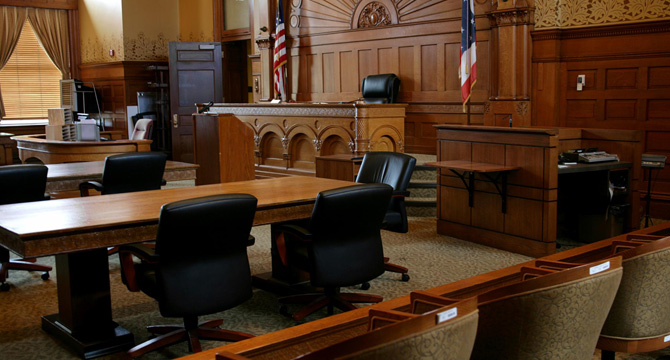
In patent litigation, assignor estoppel is a common law doctrine that can dramatically alter the rights of both parties involved – when applicable it is dispositive on the issue of patent validity. However, despite the import of this doctrine, there is a lack of clarity of how and to whom this doctrine applies and even to whether this defense exists at all post-Lear. This article summarizes the current landscape of assignor estoppel claims, and highlights the risks to plaintiffs and defendants as to the continuing lack of clarity that this area of the law poses.
What is Assignor Estoppel?
Assignor estoppel is an equitable doctrine that prevents any assignor of patent rights from later challenging the validity of assigned patent. The intent of this doctrine is evident: a seller should not be allowed to represent to a buyer that a good is valuable, only to later assert that same good is worthless. By invoking this doctrine in the patent context, courts have essentially grafted these equitable protections of contract law onto the predominantly statutory realm of patent law.
The distinction between assignor estoppel and licensee estoppel is an important one. Like assignor estoppel, licensee estoppel acts to prevent future claims of invalidity by a rights holder of a patent. But unlike assignor estoppel, licensor estoppel applies to patent licensees—individuals who obtain less than absolute rights to a patent. Many decades ago in the Lear v. Adkins case, the Supreme Court rejected the doctrine of licensee estoppel in the patent context.[1] The Court reasoned that the equitable concerns at play in the licensor-licensee context were outweighed by “the important public interest in permitting full and free competition.”[2]
The Supreme Court has never abolished assignor estoppel, although many in Congress and the academic community believed that the logical extension of Lear was that, like licensee estoppel, assignor estoppel was also no longer available in the patent context.[3] The uncertainty as to assignor estoppel after Lear is reflected in its divergent treatment by the Courts of Appeals post-Lear. For example, as early as 1972, the Ninth Circuit declared that the doctrine was abolished in patent infringement cases.[4] But the Fifth Circuit held the opposite in 1978.[5]
Nevertheless, on multiple occasions, the Federal Circuit has upheld the doctrine of assignor estoppel, extending that doctrine to those in ‘privity’ with the assignor as well. Those in ‘privity’ include companies that hire the assignor in cases where the assignor is an individual;[6] companies that were in a joint venture with the assignor’s company;[7] and companies that are subsidiaries of the company which hired the assignor.[8]
An Opportunity for Clarity
The Federal Circuit most recently applied the doctrine of assignor estoppel in Mentor Graphics Corp. v. EVE-USA, Inc.[9] The case involved inventors who previously worked for Mentor Graphics. As per Mentor’s employment agreement, the inventors assigned all patent rights to their inventions to Mentor. One of those inventions matured into a patent – the ’376 patent. Later, the inventors left Mentor to form the start-up EVE-USA, which produced similar products to Mentor. Rather than risk an infringement lawsuit with Mentor, EVE-USA signed a license agreement to practice the ’376 patent until such time as EVE-USA was bought by a competitor.[10]
When the entity Synopsis, a direct competitor of Mentor, bought EVE-USA, Mentor threatened suit over alleged infringement of the ’376 patent. In response, Synopsis countersued for a declaratory judgment that the ’376 patent was invalid. Mentor Graphics claimed that because Synopsis was in privity with EVE-USA and therefore the inventor-assignor, it was estopped from alleging that the ’376 patent was invalid. The District Court agreed and granted summary judgment barring Synopsis from challenging the validity of the ’376 patent.
A Federal Circuit panel upheld its precedent and estopped EVE-USA from making its invalidity claim.[11] Synopsis petitioned for re-hearing en banc. Judges Moore and Chen – who were both on the opinion panel – wrote a concurrence explaining the denial as to the assignor estoppel aspects. This concurrence stated that it “may be inclined to reconsider the breadth of the doctrine of assignor estoppel, but this case is not a proper vehicle to do so.”[12] The concurrence acknowledged the amicus of law professors which challenged the breadth of assignor estoppel doctrine but noted that the petitioner’s argument in this case was a narrow one – simply that the doctrine was abolished by Lear.
EVE-USA has since petitioned the Supreme Court for certiorari, arguing that in light of Lear, and the expanding of assignor estoppel to entities in ‘privity’ with the assignor, the Federal Circuit has gone “far beyond even the origins [the Supreme Court] already renounced [in Lear].”[13] Four amicus briefs have been filed in the case and the Supreme Court has asked for the views of the Solicitor General.
The Fate of Assignor Estoppel
EVE-USA’s petition now brings the question that the majority in the Federal Circuit reasoned was not squarely before the Supreme Court in Lear: should assignor estoppel be abolished?
There are arguments for both outcomes. Those who argue in favor of assignor estoppel’s continued availability point to the underlying principles of contractual obligations and fairness that undergird patent assignments: “[w]hen an inventor/assignor assigns his patent rights to someone else for value, he may make an implicit representation that what he sold has value.”[14] To bring equity to contracting parties, some argue that an individual should not be allowed to profit off what she truly believes is not novel or inventive.
On the opposite side, those who argue against assignor estoppel assert that fairness and contractual transparency considerations should not apply in certain factual circumstances such as when inventors assign patent rights as a condition of their employment and therefore do not make any representations of value to their employer. Another circumstance in which application of assignor estoppel may not make sense is when the privity aspect implicates an entity to whom no representation was made at all (e.g., a company that buys the assignor arguably does not ‘buy’ the promise that previously assigned patents were valuable).[15]
If the Supreme Court should grant the petition in EVE-USA, it will have an opportunity to bring clarity to a contentious area of patent litigation. Of course, as seen in the Federal Circuit opinion and denial of en banc below, the Supreme Court could dodge providing any real clarity on assignor estoppel because of the narrow grounds argued by Synopsis to the Federal Circuit. Namely, the Supreme Court could merely say that Lear did not abolish assignor estoppel and leave it at that because that was, at least in the Federal Circuit’s view, the extent of the argument made on appeal by Synopsis. Even so, that would at least answer the question of whether Lear abolished assignor estoppel as well as licensee estoppel.
Of note, at least one Court of Appeal, the Eighth Circuit, has made an attempt to chart a middle ground in a separate but related context. In Fair Isaac, a claim of licensee estoppel was made in the trademark context.[16] Notably, Lear did not abolish licensee estoppel for non-patent IP cases. The case involved a license agreement between the credit bureau Experian, and FICO, to use FICO’s famous credit score scale trademark. During litigation between FICO and Experian, FICO objected to Experian’s argument that the trademark was invalid.[17] The district court allowed the argument. On appeal, the Eighth Circuit was faced with balancing the equitable considerations of licensee estoppel (a licensee of a trademark cannot claim that what they bargained for is now worthless) and the need to promote free and fair competition.
As against Experian, the Eighth Circuit found that licensee estoppel did apply, because the parties were directly in privity.[18] However, as against VantageScore, a separate entity connected to the credit bureaus, the Court reasoned otherwise. Noting that plaintiff FICO did not “present evidence, nor did the district court find, that VantageScore was the alter ego of Experian or the three credit bureaus collectively,” the Court found that “VantageScore was not a licensee and therefore was not estopped from challenging the mark under a theory of agency or equity.”[19] Such a nuanced approach into the ‘privity’ question may have relevance in the assignor estoppel context in a patent case.
Conclusion
The lack of clarity over when and how assignor estoppel applies, and whether the Federal Circuit has impermissibly deviated from the command of Lear, continues to make strategizing litigation outcomes challenging for clients that litigate as plaintiffs or as defendants. This confusion is exacerbated by the increasing ways in which companies associate themselves with one another, through collective entities, patent portfolio assignments, cross-licensing agreements, and other varying degrees of ‘privity.’ While the approach taken by the Eighth Circuit—to hold that an additional ‘alter ego’ element must be shown before loosely affiliated entities will be considered in privity with the licensee or assignor—might resolve part of problem, it does not yet apply to patent law. EVE-USA is before the Supreme Court—and this is a good opportunity to bring clarity and predictability to an important feature of patent litigation.
[1] Lear v. Adkins, 395 U.S. 653 (1969).
[2] Id. at 656.
[3] See, e.g. Mark A. Lemley, Rethinking Assignor Estoppel, 54 Hous. L. Rev. 513, 529 (2016); Patent Law Revision: Hearings Before the Subcomm. On Patents, Trademarks, and Copyrights of the S. Comm. On the Judiciary, 92nd Cong. 218 (1971) (Chamber of Commerce).
[4] Coastal Dynamics Corp. v. Symbolic Displays, Inc., 469 F.2d 79 (9th Cir. 1972) (per curiam).
[5] Nationwide Chem. Corp. v. Wright, 458 F. Supp. 828, 840 (M.D. Fla. 1976), aff’d 584 F.2d 714 (5th Cir. 1978).
[6] Shamrock Techs., Inc. v. Medical Sterilization, Inc., 903 F.2d 789, 793-96 (Fed. Cir. 1990).
[7] Intel Corp. v. ITC, 946 F.2d 821, 839 (Fed. Cir. 1991)
[8] Mentor Graphics Corp. v. Quickturn Design Sys., Inc., 150 F.3d 1374, 1376-77 (Fed. Cir. 1998)
[9] 851 F.3d 1275 (Fed. Cir. 2017), rehearing en banc denied, 870 F.3d 1298 (Fed. Cir. 2017).
[10] 851 F.3d at 1280-81.
[11] Id. at 1283.
[12] Mentor Graphics Corp. v. EVE-USA, Inc., 870 F.3d 1298, 1304 (Fed. Cir. 2017) (denying petition for rehearing en banc).
[13] Brief in Support of Petition for certiorari, EVE-USA, Inc. v. Mentor Graphics, Corp., No. 17-804 at 2 (2017).
[14] Mentor Graphics, 870 F.3d at 1306.
[15] See Brief in Support of Petition, supra note 13 at 20 (“Because [patent rights assignments] are a standard part of employment . . . the [inventor] is not making any representations to her employer about the patent-worthiness of the invention.”).
[16] See Fair Isaac Corp. v. Experian Info. Sols., Inc., 650 F.3d 1139 (8th Cir. 2011).
[17] Id. at 1150 (“Following trial, FICO moved for judgment as a matter of law on the issue of licensee estoppel, requesting a new trial that precludes Defendants from presenting evidence and argument challenging whether the mark is entitled to protection.”) (internal quotation and citation omitted).
[18] Id. at 1151.
[19] Id. (emphasis added).
